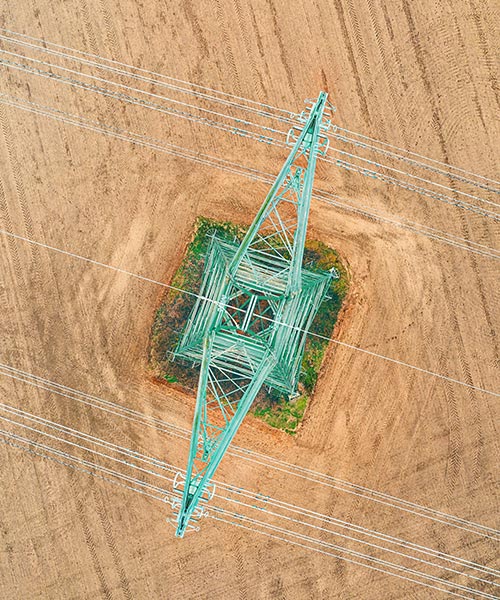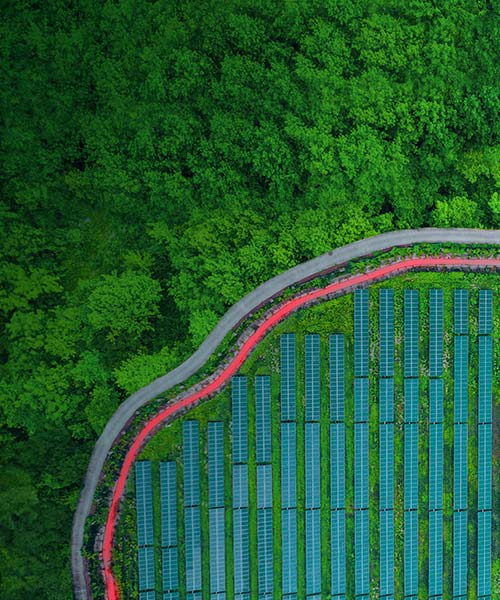June 26, 2023 • 4 min read
From Ambition to Reality: Five things you need to know about creating partnerships
How would you describe a world where access to infrastructure performance data is made public? Where there’s shared ownership and open collaboration? And risk and reward are evenly and appropriately distributed on our way to a net-zero future?
This could be our reality in the next seven years if we turn our net-zero ambitions and thinking into action now.
Our series of papers, From Ambition to Reality highlights five key shifts in infrastructure delivery needed to meet the challenge of scale and speed to achieve mid-century net zero.
The fourth shift, creating partnerships warns that if governments, communities, and projects don’t share goals and a collective imperative to get to net zero, the social challenge of decarbonization will likely be far greater than the technical challenge.

Community groups must be central to new types of partnerships. Governments must lead from the front. And we must empower new coalitions to hit net-zero targets and deliver value to the communities they serve.
We explore five key things on how we can make that happen.
1. Construct a ‘no surprises’ partnership approach
Project developers can build trust with communities if they give them access to trusted project performance data. That might be through online access, or in a different way that works for the local community. Whatever the format, this is about making sure communities know what is happening, where and when.
“The composition of partnerships, the roles and responsibilities they assume, and the extent they feel they own a stake in the project, will make it easier to share risks and rewards more fairly,” says Sue Brown, Executive Group Director, Sustainability & Corporate Affairs.
“Partnership members will need to be included in project teams and decision-making bodies to guarantee early alignment, transparency, and confidence in the direction of travel. These partnerships will need to reach all the way across the value chain, sharing data and intellectual property.”
2. Override commercial instincts
“The transition will be vastly more difficult if we don’t bring the decarbonization of our energy systems together more effectively and efficiently. We can only do this if we share common and critical infrastructure like poles and wires, hydrogen and carbon dioxide pipelines, water sources and desalination facilities. But this form of collaboration doesn’t come naturally,” says Brown.
“Our instinct is to act independently and protect our commercial interests. But in UK industrial clusters we’ve seen digital technology providers work together on new, digitally based collaboration tools to help enable low-emissions clusters move forward.“They’ve unlocked new collaborative approaches between industries, increasing the speed of collaboration. If we are to adopt this philosophy industry wide, in time it’ll lead to the faster development of real, assets on the ground.”
3. Update work and education pathways
Net zero is an endeavour that will reach every corner of the world – so we need global communication and collaboration. It’ll make the transition more efficient and spread the best solutions far and wide.
For this to work, we need mutual respect, trust, clarity, and well-defined roles and expectations. Some of these roles might be brand new to accommodate emerging technologies. But most will be able to take advantage of and transfer the skills of our current workforces into new energy industries”.
4. Expect governments to lead from the front
The rules will dictate the change. Governments need to set ambitions, define goals and enact legislation that creates the market forces to drive desired low-carbon behaviors. They can incentivize this in various ways: access to capital markets, entry to carbon markets, and tax breaks.
“Governments will require master plans that split the decarbonization task into technologies or specific objectives. These plans need to set out national targets and contemplate key aspects of the transition. While retaining flexibility to build in new technologies that are invented along the way. But it’s critical that these plans include a feedback loop with key communities to ensure shared value,” says Brown.





